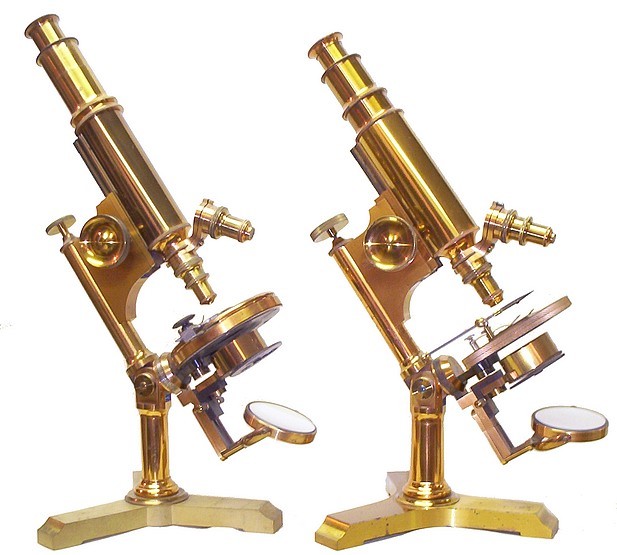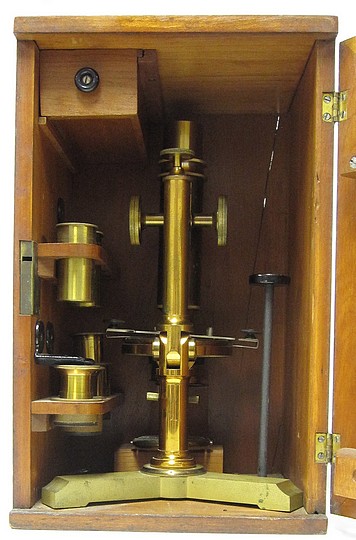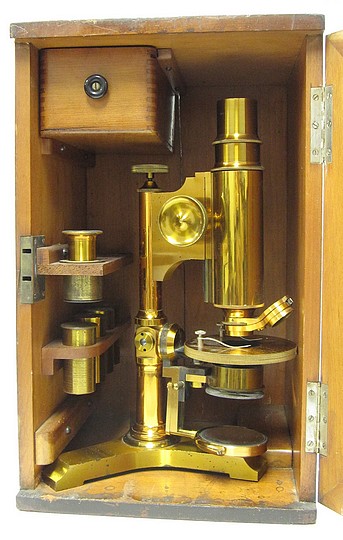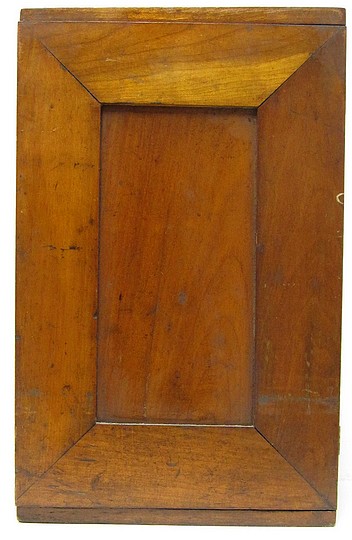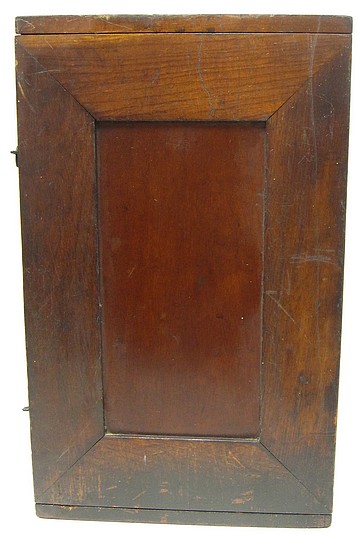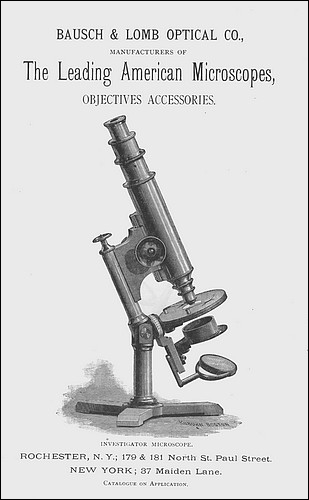From the catalog of August Stendicke, New York:
Illustrated & Descriptive Catalogue of Optical
Instruments c.1890
THE
INVESTIGATOR MICROSCOPE
In this stand I confidently claim to have reached a
higher degree of perfection than is possessed by
anyone approximating it in price. It combines, in a
moderate-priced instrument, the features of a
first-class and high-priced stand at no sacrifice
of its working qualities. The different parts are
ingeniously combined, are strong and firm, and in
the parts subject to friction I have introduced, as
much as possible, new compensating bearings, which
enable the instrument to endure any amount of work
and still retain smooth and reliable movements,
Working microscopists will understand the value of
this quality. When contracted, it stands but 11
inches high, but can be extended to 18 inches.
The base is of brass, and has the tripod form:
pillar and arm of brass, connected by a solid
joint, which allows inclination of body to any
angle; rack and pinion for coarse adjustment, fine
adjustment by our patent frictionless motion; main
tube, with two draw tubes. This is an entirely new
feature in Microscopes, which is an unquestionable
improvement. It permits the use of standard length
of tube for quick adjustment ill outside tube, same
as in instruments without rack and pinion
adjustment; the same for any low power objective
and the use of amplifier in either combination. The
outside tube has a broad gauged screw, and adapter
with society screw. The stage lies in the same
plane as centre of movement for mirror, is of
brass, and has concentric, revolving motion with
removable clips. It is thin to allow great
obliquity, and, as it rests upon a strong
projecting arm, is perfectly firm under any
manipulation.
The mirror-bar swings with a perfectly easy but
firm motion, upon one bearing to any obliquity
below, and above the stage for the illumination of
opaque objects, and has affixed to it a secondary
bar, to which the mirror is attached and which
allows the separate use of the latter in any
position of the sub-stage. It is provided with a
sliding arrangement, whereby the mirror may be
moved to and from the object. The mirrors are plain
and concave, and of large size. The sub-stage is
adjustable along the mirror-bar and entire
removable. It contains a diaphragm which may be
brought directly under the stage. The ring is of
standard size and is easily centered by a
set-screw. Steel pin for centering stage and
sub-stage accompanies the instrument.
Eye-pieces A and C, the latter arranged with slot
for micrometer. Objectives, 3-4 inch and 1-5
inch.
Camera lucida, eye-piece micrometer, pliers, slides
and covers. Magnifying powers, 35 to 600
diameters.
In upright walnut case, with handle and lock, drawer
for accessories, and receptacles for eye-pieces and
objectives, - $70.00
The above, when double nose-piece is ordered with it,
- 75.00
Same stand, with any power eye"piece, in above
case, - 45.00
The above, with improved glass stage and slide
carrier, which fastens to the brass stage, extra, -
5.00
